We all need to feel free again, why not do it as soon as everything ends with special destination Japan? We are called Japan Italy Bridge, obviously we love Japan, but we recommend it to everyone. Those who have been there will want to return, those who haven’t are dreaming of going there.
The 5 destinations in Japan not to be missed according to Japan Italy Bridge
Author: SaiKaiAngel
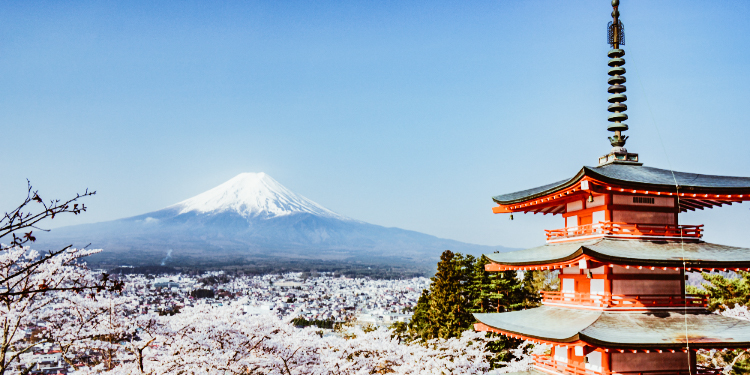
photo credits: expat.com
Japan should be seen and experienced, because each of its smallest part can give us something unique, can enrich us with experience and tradition, if you rely on the experts of JNTO you can go on the safe side! Japan is not only an unmissable destination, but it’s also completely safe, with all its attentions and precautions. With JNTO you will always be guaranteed the right distance, temperature detection in stores and places of interest, protections such as the mask. Safe, reliable and… absolutely dreamy.
You surely know the usual cities to visit, but this time we would like to show you other places that we particularly like. Are you ready? Start packing your bags for your dreamy and safe travels!
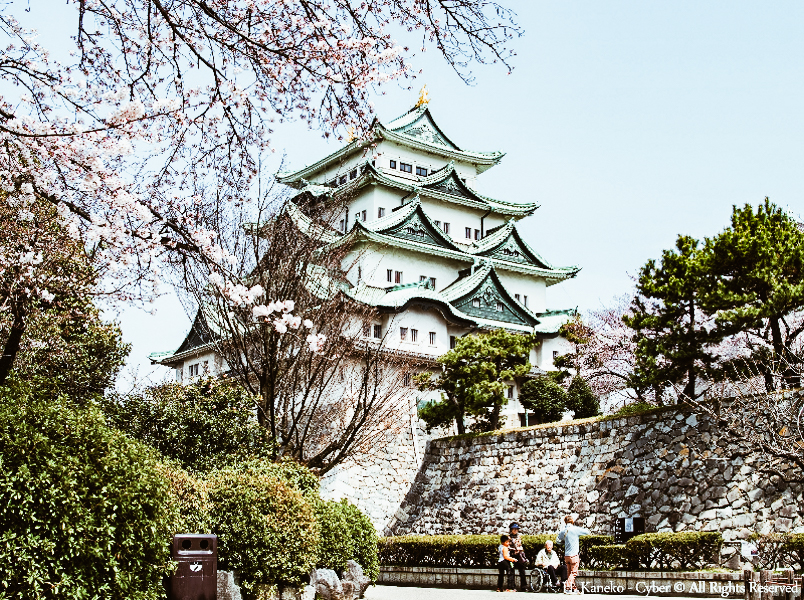
photo credits: viahero.com
Nagoya
Nagoya is a city in the Chūbu region of Honshū Island in Japan, with a port on the Pacific Ocean and two airports, including the new Chūbu-Centrair International Airport, which opened on February 17, 2005.
What to see in Nagoya
First and foremost, we believe the Atsuta Shrine is the most important. This shrine, founded over 1900 years ago is one of the oldest Shinto shrines in Japan. Here, for is kept the sword Kusanagi no tsurugi, one of the Three Sacred Treasures of Japan. This treasure, however, is not on display, but visible only to the emperor and a few monks. The shrine is located in a very serene forest to visit to relax.
Also, not to be missed is Nagoya Castle which was the residence of the Owari branch of the Tokugawa family, built in 1612 by order of Tokugawa Ieyasu. In spring and autumn, you can find a variety of flowers and plants absolutely unique in the world, are you curious to see them?
The Tokugawa Museum of Art is now where the residence of the Owari branch of the Tokugawa family once stood and collects and displays some of the family’s great artistic heritage. The collection includes samurai swords and armour, costumes, tea ceremony utensils, books, maps and scrolls from the Genji Monogatari. Near the museum is a beautiful Japanese garden, the Tokugawa-en.
Osu Kannon Temple, on the other hand, is a Buddhist temple located in the centre of Nagoya. The temple houses a rich collection of ancient Japanese and Chinese texts.
Nagoya is home to very important museums, including The Railway Museum that exhibits ancient steam locomotives including the legendary C62 portrayed in the anime Galaxy Express 99 and the Toyota Museum of Industry and Technology that traces the evolution of manufacturing processes and aspects of industrial technology.
Kobe
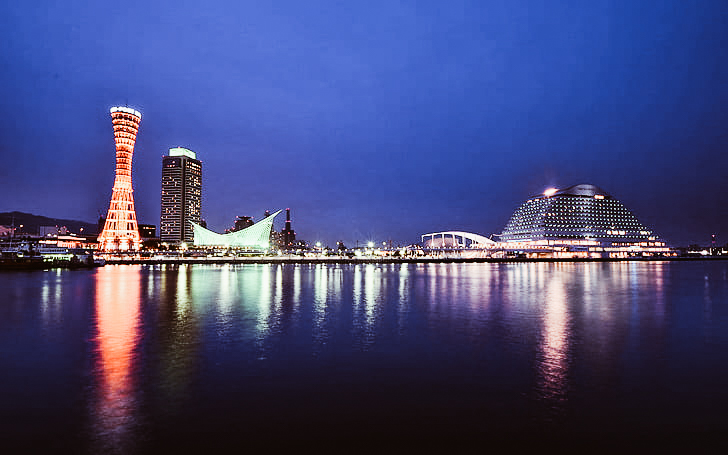
photo credits: wallpaperflare.com
Kōbe is located on the island of Honshū. For about six months in 1180, it was the capital of Japan, when Emperor Antoku moved to Fukuhara kyō, which was located in today’s Hyōgo-ku city district.
What to see in Kobe
A place not to be missed and enjoyed completely is the Shin-Kobe and Nunobiki Herb Garden Cable Car that starts near Shin-Kobe Station. On the way up, you’ll pass by the Nunobiki Waterfall and Nunobiki Herb Garden but the focal point of the ride is at the observation deck located right next to the top station, which offers spectacular views of Kobe both day and night.
Also take a trip to Sorakuen Garden which was part of the residence of Kodera Kenkichi, former mayor of Kobe opened to the public in 1941.
Nostalgia for parks? Meriken Park is a mix of nature and modernity. Along with the greenery, you can range up to a collection of modern art installations. In this park, you can find the red harbour tower and the Maritime Museum.
The Kobe Museum was opened in 1982, with collections from the Kobe Archaeological Museum and the Namban Museum of the Arts. The museum’s permanent exhibition offers a collection of maps from different regions and eras of Japan, as well as artefacts representing Japan’s trade with foreign countries.
You can’t leave Kobe before making more than a quick trip to the Arima Onsen, a famous spa town in a natural mountain setting. Your relaxation is assured!
Delight your senses, delight your eyes as well at the Akashi Kaikyo Bridge. At over 4 km long, it is the longest suspension bridge in the World. The bridge connects the island of Honshu to the island of Awaji.
In Kobe, we find a museum not to be missed, the Earthquake Museum. On January 17, 1995, at 05:46, the city of Kobe was hit by the Great Hanshin Awaji Earthquake, causing the death of over 5000 people and the destruction of tens of thousands of homes.
The museum, which opened as a memorial in 2002, includes a large theatre with a screen that plays realistic images of the earthquake’s brutality, and various interactive games on disaster prevention.
To end our visit to Kobe, let’s enjoy a visit to the Sake Distillery! The Nada district in Kobe is the major sake production site in the region, due to its good availability of high-quality rice, suitable water, and favourable weather conditions for producing the alcoholic beverage.
Sapporo
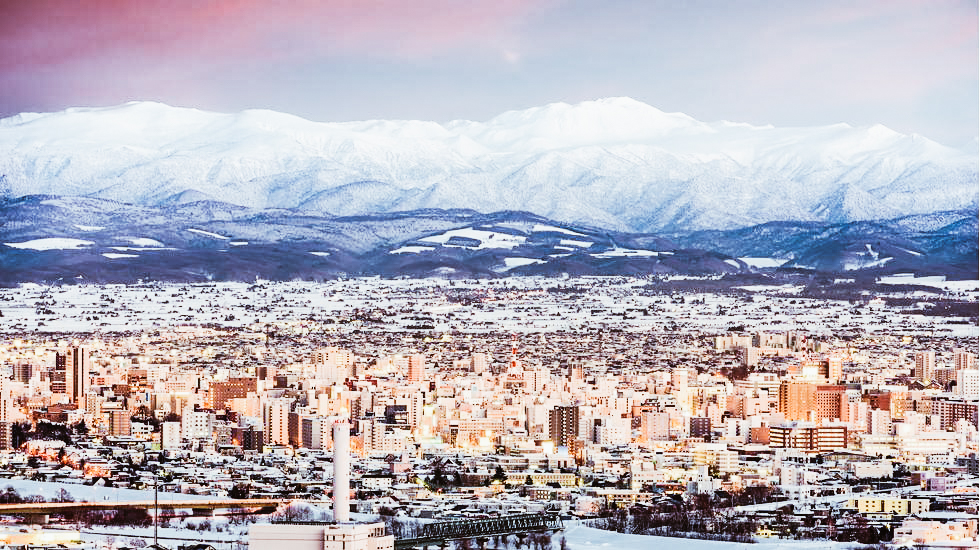
photo credits: suitcasemag.com/
Sapporo is a Japanese city, capital of the Hokkaidō prefecture, located in the southwestern part of the island of Hokkaidō, known for hosting the 1972 Winter Olympics, the first held in Asia, and for the famous Snow Festival that attracts over 2 million tourists from all over the world.
What to see in Sapporo
The historic village of Hokkaido
Of course, we start with the Hokkaido Historical Village, which is an open-air museum. 60 buildings from the past with various sections including towns and villages Don’t miss these moments!
Instead, ìthe Sapporo Snow Festival (Sapporo Yuki Matsuri) takes place every February in Sapporo for a week. Born in 1950 when high school students started building snow statues in Odori Park, it is now a big event with spectacular snow and ice sculptures that attracts millions of visitors every year. In contrast, the Okurayama Observatory originated from the 90-meter ski jump used in the 1972 Winter Olympics! A must-see attraction, right in the Okurayama Ski Jump Stadium.
Want to relax after a long walk? Here for you is Moerenuma Park which is a park in the northeast of Sapporo surrounded by a swamp, a unique place that you definitely can’t miss.
Here we are at the Hokkaido Historical Museum which documents the history of Hokkaido’s development. You can find and see, in chronological order, the entire history of the prefecture from 20,000 years ago, to the post-war years after 1945.
Hungry? Shiroi Koibito Park is a chocolate company. Have you ever tried the Shiroi Koibito cookie? In case you’ve never tried it, it’s two thin butter cookies with a layer of white chocolate in between. This is one of the top souvenirs in Hokkaido!
Thirsty? After chocolate, a good beer suits us perfectly, so we recommend the Sapporo Beer Museum.
In Japan beer was born in Hokkaido in fact, Sapporo is one of the oldest and most popular brands in the country. This beer is produced, precisely in Sapporo, in 1877 and is famous throughout the world, you will have happened to find it in restaurants here in Italy! The museum will show you the production process of beer and not only that! You can end the visit with a unique tasting!
Our visit ends in relaxation in the Botanical Garden that has a mainly didactic purpose, apart from being a pleasant break for visitors. In our opinion absolutely not to be missed, especially if you are looking for a moment of peace during the excursions and visits.
Kamakura
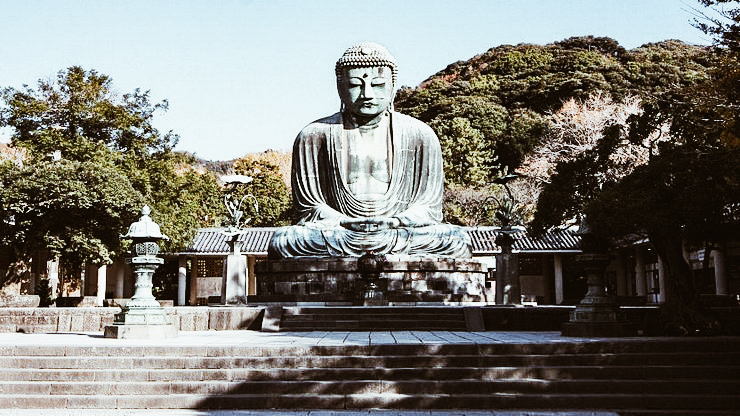
photo credits: japan-guide.com
This is a very important place that we at Japan Italy Bridge absolutely recommend. We are talking about Kamakura, a tourist and also seaside resort easily accessible from Tokyo. If you need a moment of relaxation during your trip to Japan, you can count on Kamakura.
Just think that Kamakura is facing the ocean, with its beach about 2 km long that takes two different names, Yuigahama Beach and Zaimokuza Beach. All around are hills and forests, crisscrossed by various trails. Among these is the Daibutsu path that leads from the great buddha to the Kita-Kamakura station, the Genjiyama path that starts from the Jufukuji temple and connects to the Daibutsu path, about at the height of the Zeniarai Benten temple, the Gionyama path near the Myohonji temple and the long Tenen path that connects the Kenchoji temple to the Zuisenji and Jomyoji temples.
During the Heian period it was the capital of the Kantō region and in 1192 the shogun Minamoto no Yoritomo moved his new capital here, transforming Kamakura din a real political centre of Japan.
What to see in Kamakura?
Kamakura is mainly known for its temples and altars and the one that we loved the most perhaps because of the bond that we feel towards this family of Samurai, is the shrine Tsurugaoka Hachimangu. The shrine is dedicated to Hachiman, the patron god of the Minamoto family and Samurai in general. On a terrace at the top of a staircase you can find the main hall with a small shrine museum, which displays various treasures such as swords, masks and documents. Next to this grand staircase, you could find a beautiful gingko tree that delighted visitors’ eyes with its golden color every autumn, which unfortunately did not withstand a storm in 2010. Before entering the staircase, you can find the Maiden, a stage for dance and music performances.
The large statue of Amida Buddha, on the other hand, is located in the Kōtoku-in temple and is the most important statue in the country. Think that the temple in which it was located was destroyed during a tsunami in the fifteenth century, but the statue resisted and since then it is outdoors. The town is also home to the tombs of Minamoto no Yoritomo and Hōjō Masako. Engakuji Temple is one of the main Zen temples in eastern Japan, founded by the ruling regent Hojo Tokimune in the year 1282.
We move on to Hasedera Temple famous for its eleven-headed statue of Kannon, the 9.18-meter-tall goddess of mercy. The Kannon museum displays some of the temple’s treasures, including Buddhist statues, the temple bell and a scroll. Also beautiful is the location of this temple, built along a wooded hillside quilted with small lakes.
As we said, Kamakura is the place of temples and shrines, so we point out other names to visit: Kenchoji, The Zeniarai Benten (very important for tradition if you want to wash your money!) and Zuisenji.
Obviously, there are restaurants where you can taste the delicacies of the place.
Hakone

photo credits: gaijinpot.com
Another must-see destination in Japan, in our opinion, is Hakone. Easily accessible from Tokyo, it is a place that can offer you not only relaxation, but also unmissable experiences. Here is our virtual tour of Hakone!
What to see in Hakone
The first thing to see is definitely Lake Ashi. We left our hearts on that lake and the panoramic view of Mount Fuji in the background. A real picture that you will carry inside you for a lifetime. This picture is among other things one of the hallmarks of Hakone. To experience Lake Ashi in all its beauty, you can cross it thanks to three vessels inspired by the ships of the eighteenth and seventeenth centuries. Special views, the important ports of Hakone, Machi and Porto Moto will make your moments unforgettable and you will feel part of that unique picture.
Always in the name of relaxation, remember that Hakone is the city of Onsen or hot springs. Today of the wonderful thermal centres, these Onsen will offer you the heavenly moment of relaxation, pampering all your senses. The Yumoto spring is the oldest and is located near Odawara. You are spoiled for choice, among the names we recommend is definitely Hakone Kamon, with its pools made externally of wood and stone.
After relaxing, it’s time to visit the Hakone Shrine, Hakone Jinja which is located right on the shores of Lake Ashi. It consists of many buildings scattered in the forest, with a staircase embellished with lanterns that will make the walk a fairy tale.
Let’s move on to the wonderful Odawara Castle built in the mid-fifteenth century in the hands of the Hojo Clan. We are in 1950 when Toyotomi Hydeyoshi defeated the Hojo Clan and reunited Japan. This castle is rich in history, three stories high seen from the outside and four inside. Inside the castle, you can see valuable period furnishings, armour and other items of historical interest and if you really want to enjoy a spectacular view, look at the whole city from the other in the highest floors! For Museum lovers, here is the Odawara Castle Historical Museum, with a very interesting interactive exhibition of objects related to the history of the castle.
On the other hand, the Gora Park is a French-style park with a large fountain, a rose garden and two greenhouses with tropical plants and flowers, a restaurant, a tea room and a Craft house, where you can try various workshops such as pottery making, glass blowing and ikebana composing.
After all that, what to do to extend your life? I’m not kidding, but I’m talking about Owakudani’s black eggs. We are in a volcanic area famous for kuro tamago chicken eggs made black by cooking in hot springs. According to Japanese tradition, if you eat kuro tamago you will extend your life by 7 years! You will find them only in Owakudani!
Viaggiare il Giappone in sicurezza
Obviously, these are just some of the places that we propose, but Japan should be seen all. Each temple, each shrine, each garden is a world unto itself, something that cannot be found in other parts of the world. If you want to experience many different worlds in one place, you can’t do without Japan. Thanks to JNTO, you can have a personalized and safe trip! With JNTO, especially in this moment of pandemic for COVID-19, you can explore Japan in absolute safety, visit the places you love without fear and in complete tranquillity. We like to repeat that with JNTO will always be guaranteed the right distance, temperature detection in stores and places of interest, protections such as the mask. Safety first and no risk, to enjoy a trip with a capital V do not be afraid and rely on JNTO! We have done it several times and we can assure you that the experience will be not only unforgettable but also in complete safety!
Also in collaboration with JNTO, don’t forget the Hiroshima Hakken menu at TENOHA Milanoa! While waiting to leave, you can enjoy Hiroshima’s specialties with this special TENOHA menu sponsored by JNTO Japanese National Tourist Board! This special menu that, with its sake tasting, will keep you company throughout January! The best sake in Hiroshima is here!

Night Emperor, Honshu ichi, Zoka, Itteki Nyukon, Sempuku Shinriki are the sake from Hiroshima that will remain available for you all January with the Sake Tasting! Here are their characteristics:
Honshu ichi
Night Emperor, Honshu ichi, Zoka, Itteki Nyukon, Sempuku Shinriki are the sake from Hiroshima that will remain available for you all January with the Sake Tasting! Here are their characteristics:
‘Zoka’
Junmai Daiginjo is made from “Yamada Nishiki” sake rice grown in a field located about 6 km north of the brewery, using Saijo underground water and the Hiroshima Mori technique. The delicate aroma and sweetness of the transparent and gentle rice harmonize perfectly with the fresh acidity. You can enjoy it cooled with a thin cup or glass of wine. Sake certified with Saijo JAPAN brand)
Itteki Nyukon
This sake has as first material the rice suitable for its preparation. A slightly dry Junmai Ginjo sake that goes well with foods with the right acidity, good both cold and hot.
Sempuku Shinriki 【Nickname】Filled with happiness
Kamiriki rice, which is the origin of Chifuku, is 85% processed and is close to the processing speed of rice from the Meiji and Taisho eras. A bottle full of feelings for the preparation of sake, especially suitable for people who particularly care about Japanese sake.
Night Emperor
Night Emperor is a mixed Hachitan Nishiki based liqueur produced in Hiroshima Prefecture. Versatile liqueur is easy to combine with any dish. Soft taste that takes advantage of the characteristics of fresh water preparation and keeps the alcohol content low while maintaining the taste of koji and rice. Good tasted both cold and hot.
Start planning your trip to Japan and while you’re doing it, enjoy the special Hakken of Hiroshima at TENOHA Milano for the whole of January! As you can see, JNTO is close to you at all times, reminding you that Japan is a destination that will give you all the security you are looking for!
Share this:
- Click to share on Facebook (Opens in new window)
- Click to share on Twitter (Opens in new window)
- Click to share on Tumblr (Opens in new window)
- Click to share on Pinterest (Opens in new window)
- Click to share on Telegram (Opens in new window)
- Click to share on WhatsApp (Opens in new window)
- Click to share on Reddit (Opens in new window)
- Click to print (Opens in new window)






